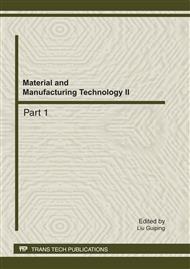[1]
Takasu Nobuo. An experimental analysis of transformers by Geomagnetically induced currents [J]. IEEE Trans. on power Delivery, 1994, 9(2): 1173-1179.
DOI: 10.1109/61.296304
Google Scholar
[2]
J G Kappenman, V D Albertson. The Geomagnetic Storms [J]. IEEE Spectrum Magazine, 1990, 27(3): 27-33.
Google Scholar
[3]
LIU Lian-Guang, LIU Chun-Ming, ZHANG Bing etal. Strong magnetic storm s influence on China's Guangdong power grid. Chinese Journal of Geophysics, 2008, (04).
Google Scholar
[4]
LIU Lian-Guang. Scientific Issues on How to Cope With Damage in Large-Scale Power Grid Caused by Disastrous Space Weather. Power System Technology, 2010, (06).
Google Scholar
[5]
LIU Lian-Guang. Comparative study on GIC levels in power grids of different voltages. Journal of Changchun Institute of Technology (Natural Sciences Edition), 2010, (03).
Google Scholar
[6]
WANG Ying, LIU Chun-ming, LIU Lian-guang, YAN Yong-qiang. An Online Monitoring System of Geomagnetically Induced Current in Power Grid. Automation of Electric Power Systems, 2009(15).
Google Scholar
[7]
WANG Peng, HUANG Huafeng, CAO Ke. Cloud Computing: China's Future IT Strategy. Beijing: POSTS&TELECOM PRESS(2010).
Google Scholar
[8]
Information on http: /baike. baidu. com/view/1316082. htm#sub1316082.
Google Scholar
[9]
LIU Chun-ming. Mid-low Latitude Power Grid Geomagnetically Induced Currents and Its Assessing Method [D]. North China Electric Power University, Beijing, (2009).
Google Scholar
[10]
Ying Wang, Jian Wang, Lian-guang Liu. Design and Implementation of the Web-based monitoring system for geomagnetically-induced current [A]. Intelligent Computing and Intelligent Systems[C]. Xiamen, China: 2010: 530-533.
DOI: 10.1109/icicisys.2010.5658291
Google Scholar
[11]
Kuang Shenghui, Li Bo. Analysis of Cloud Computing Architecture and its Application. Computer & Digital Engineering, 2010, (03).
Google Scholar
[12]
He Cong, Jin Lianwen, Zhou Guibin. Handwriting Recognition System Based on Cloud Computing Platform. Telecommunications Science, 2010, (09).
Google Scholar
[13]
Zhang Yunyong, Chen Qingjin, Pan Songbai etal. Key Security Technologies on Cloud Computing. Telecommunications Science, 2010, (09).
Google Scholar
[14]
ZHAO Junhua, WEN Fushuan, XUE Yusheng etal. Cloud Computing: Implementing an Essential Computing Platform for Future Power Systems. Automation of Electric Power Systems, 2010, 34(15).
Google Scholar


